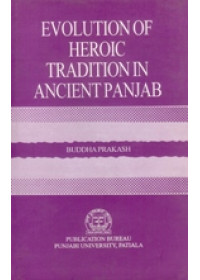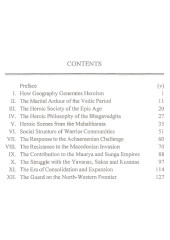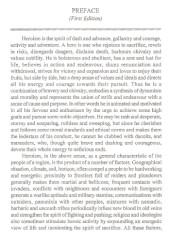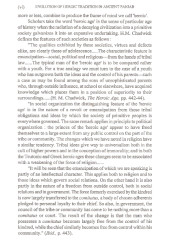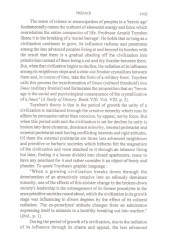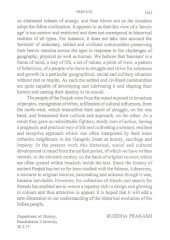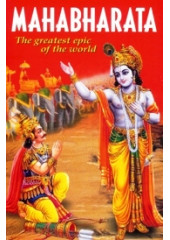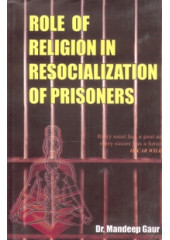Monday to Saturday - 10:00 Am to 9 PM
Now Enjoy Bulk Discounts on Books as Mentioned Below
These Discounts are in addition to the Discounts on Individual Books (Visible as Bulk Discount for Books in Cart)
Extra 10% Off If Books Purchased Exceeds Rs 3000 or 75 USD or 60 GBP or 60 Euro or 100 AUD or 100 CAD
Extra 15% Off If Books Purchased Exceeds Rs 6000 or 150 USD or 120 GBP or 120 Euro or 200 AUD or 200 CAD
Extra 20% Off If Books Purchased Exceeds Rs 15000 or 225 USD or 180 GBP or 180 Euro or 300 AUD or 300 CAD
Extra 25% Off If Books Purchased Exceeds Rs 30000 or 300 USD or 240 GBP or 240 Euro or 400 AUD or 400 CAD
Preface To The Book ‘Evolution of Heroic Tradition in Punjab’ - Book By Buddha Prakash
Heroism is the spirit of dash and advance, gallantry and courage, activity and adventure. A hero is one who rejoices in sacrifice, revels in risks, disregards dangers, disdains death, harbours chivalry and values nobility. He is boisterous and ebullient, has a zest and lust for life, believes in action and endeavour, shuns renunciation and withdrawal, strives for victory and expansion and loves to enjoy their fruits, but side by side, has a deep sense of values and ideals and directs all his energy and courage towards their pursuit. Thus he is a combination of bravery and chivalry, embodies a synthesis of dynamism and morality and represents the union of strife and endeavour with a sense of cause and purpose. In other words he is animated and motivated in all his fervour and enthusiasm by the urge to achieve some high goals and pursue some noble objectives. He may be rash and desperate, stormy and unsparing, ruthless and sweeping, but since he cherishes and follows some moral standards and ethical norms and makes them the lodestars of his conduct, he cannot be clubbed with dacoits, and marauders, who, though quite brave and dashing and courageous, devote their whole energy to nefarious ends.
Heroism, in the above sense, as a general characteristic of the people of a region, is the product of a number of factors. Geographical situation, climate, soil, horizon, often compel a people to be hardworking and energetic; proximity to frontiers full of raiders and plunderers generally makes them martial and bellicose; frequent contacts with invaders, conflicts with neighbours and encounters with foreigners generate a warlike aptitude and military stamina; communications with outsiders, pammixia with other peoples, mixtures with nomadic, barbaric and uncouth tribes periodically infuse new blood in old veins and strengthen the spirit of fighting and pushing; religion and ideologies also sometimes stimulate heroic activity by expounding an energetic view of life and inculcating the spirit of sacrifice. All these factors, more or less, combine to produce the frame of mind we call 'heroic'.
Scholars take the word 'heroic age' in the sense of particular age of history when the radiation of a decaying civilization into a primitive society galvanizes it into an expansive undertaking. H.M. Chadwick defines the features of such societies as follows:
"The qualities exhibited by these societies, virtues and defects alike, are clearly those of adolescence...... The characteristic feature is emancipation—social, political and religious—from the hands of tribal law...... The typical man of the 'heroic age' is to be compared rather with a youth. For a true analogy we must turn to the case of a youth who has outgrown both the ideas and the control of his parents—such a case as may be found among the sons of unsophisticated parents who, through outside influence, at school or elsewhere, have acquired knowledge which places them in a position of superiority to their surroundings......(H. M. Chadwick, The Heroic Age, pp. 442-44).
"In social organization the distinguishing feature of the 'heroic age' is in the nature of a revolt or emancipation from those tribal obligations and ideas by which the society of primitive peoples is everywhere governed. The same remark applies in principle to political organization : the princes of the 'heroic age' appear to have freed themselves to a large extent from any public control on the part of the tribe or community. The changes which we have noted in religion have a similar tendency. Tribal ideas give way to universalism both in the cult of higher powers and in the conception of immorality; and in both the Teutonic and Greek heroic ages these changes seem to be associated with a weakening of the force of religion......
"It will be seen that the emancipation of which we are speaking is partly of an intellectual character. This applies both to religion and to those ideas which govern social relations. On the other hand it is also partly in the nature of a freedom from outside control, both in social relations and in government. The force formerly exercised by the kindred is now largely transferred to the comitatus, a body of chosen adherents pledged to personal loyalty to their chief. So also, in government, the council of the tribe or community has come to be nothing more than a comitatus or court. The result of the change is that the man who possesses a comitatus becomes largely free from the control of his kindred, while the chief similarly becomes free from control within his community." (Ibid., p. 443).
The sense of release or emancipation of peoples in a 'heroic age' fundamentally means the outburst of elemental energy and force which overwhelms the entire conspectus of life. Professor Arnold Toynbee likens it to the breaking of a 'social barrage'. He holds that so long as a civilization continues to grow, its influence radiates and penetrates among the less advanced peoples living at and beyond its borders with the result that there is a gradual shading off the civilization into primitivism instead of there being a cut and dry frontier between them. But, when that civilization begins to decline, the radiation of its influence among its neighbours stops and a clear-cut frontier crystallizes between them and, in course of time, take the form of a military front. Toynbee calls this process the transformation of limen (cultural threshold) into limes (military frontier) and formulates the proposition that an "heroic age is the social and psychological consequence of the crystallization of a limes" (A Study of History, Book VIII. Vol. VIII. p. 2).
Toynbee's theory is that in the period of growth the unity of a civilization is maintained through the creative minority which runs its affairs by persuasion rather than coercion, by appeal, not by force. But when this period ends and the civilization is set for decline its unity is broken into three elements, dominant minority, internal proletariat and external proletariat each having conflicting interests and rigid attitudes. Of them the external proletariat are those less advanced neighbours and primitive or barbaric societies which hitherto felt the magnetism of the civilization and were attached to it through an inherent liking but later, finding it a house divided into closed apartments, cease to have any penchant for it and rather consider it an object of booty and plunder. To quote Toynbee's graphic language :
"When a growing civilization breaks down through the deterioration of an attractively creative into an odiously dominant minority, one of the effects of this sinister change in the broken-down society's leadership is the estrangement of its former proselytes in the once primitive societies round about, which the civilization in its growth stage was influencing in divers degrees by the effect of its cultural radiation. The ex-proselytes' attitude changes from an admiration expressing itself in mimesis to a hostility breaking out into warfare." During the period of growth of a civilization, due to the radiation of its influence through its charm and appeal, the less advanced neighbours on the frontiers learn the rudiments of cultural life and develop their capacity for war and trade which they later use to encroach upon the domain of that civilization in its decline phase. When war breaks out between these 'barbaric' and 'civilized' peoples the former are at an advantage, for, to quote Toynbee, "in warfare between antagonists that are not on an equality in their level of civilization, the more highly civilized belligerant is apt to win victories that are pyrrhic because they leave the victor exhausted, while his less highly civilized opponent is apt to suffer defeats that are inconclusive because of the recuperative power that is Nature's compensation for the handicap of backwardness in organization" (Ibid., pp 33-34).
But, though invincible in warfare, the said heroic communities are vulnerable in economy, for their policy of ploughing and reaping with sword and lance has a very limited range of success. As a result a 'heroic age' is followed by a 'dark age', about which Toynbee says that "this later age has no need to be ashamed of a darkness which signifies that the barbarian incendiaries' bonfire has at last burnt itself out; and, though, after the expiry of that ghastly artificial illumination, a bed of ashes smothers the surface of the flame-seared ground, the 'Dark Age' proves to be as creative as 'Heroic Age' has been destructive." "When the fire is extinct and the clamour hushed," Toynbee adds, "the spirit moves again upon the.face of the waters; and in the fullness of time, new life duly arises from the abyss to clothe the fertile ash-field with shoots of tender green." (Ibid., p. 79).
According to Toynbee a 'heroic age' is a typical characteristic of the transition from the civilizations of the first generation, like Minoan, Harappan, Shang, etc., to those of the second, like the Graeco-Roman, Indie, Sinic etc. It acts as a link between the former and the latter and its important contribution is the 'Epic Poetry'. Thus Toynbee views a 'heroic age' as a special phenomenon of a particular stage of historical evolution.
Toynbee's theory of the 'heroic age' shows that he understands by it a particular frame of mind characteristic of the nomadic, barbaric and relatively uncivilized people living on the borders of a 'civilization', secondly, he holds that it makes its appearance when a 'civilization' decays and disintegrates and is on the breaking point inviting the frontiersmen to invade and plunder its realm, he further thinks that it flickers for a moment, producing the glow of 'epic poetry', symbolizing an elemental release of energy, and then blows out as. the invaders adopt the fallen civilization. It appears to us that this view of a 'heroic age' is too narrow and restricted and does not correspond to historical realities of all types. For instance, it does not take into account the 'heroism' of sedentary, settled and civilized communities preserving their heroic stamina across the ages in response to the challenges of geography, physical as well as human. We believe that 'heroism' is a frame of mind, a way of life, a set of values, a point of view, a pattern of behaviour, of a people who have to struggle and strive for existence and growth in a particular geographical, social and military situation without rest or respite. As such the settled and civilised communities are quite capable of developing and cultivating it and shaping their history and casting their destiny in its mould.
The people of the Panjab were from the outset exposed to invasions of peoples, immigration of tribes, infiltration of cultural influences, from the north-west, which intensified their spirit of struggle, on the one hand, and broadened their outlook and approach, on the other. As a result they grew as redoubtable fighters, sturdy men of action, having a pragmatic and practical way of life and cultivating a tolerant, resilient and receptive approach which was often interpreted by their more orthodox neighbours in the Gangetic Doab as heresy, sacrilege and impiety. In the present work this historical, social and cultural development is traced from the earliest period, of which we have written records, to the eleventh century on the basis of original sources which are often quoted within brackets inside the text. Since the history of ancient Panjab has not so far been studied with the fulness, it deserves, a recourse to original sources, painstaking and arduous though it was, became inevitable. However, the collection of shreds and search for threads has enabled me to weave a tapestry rich in design and glowing in colours and thus attractive in appeal. It is hoped that it will add a new dimension to our understanding of the historical evolution of the Indian people.
Department of History, BUDDHA PRAKASH
Kurukshetra University.
20.3.71
Table Of Contents ‘Evolution of Heroic Tradition in Punjab’ Book By Buddha Prakash
| CONTENTS | ||
| Preface | (v) | |
| I. | How Geography Generates Heroism | 1 |
| II. | The Martial Ardour of the Vedic Period | 11 |
| III. | The Heroic Society of the Epic Age | 20 |
| IV. | The Heroic Philosophy of the Bhagavadgita | 27 |
| V. | Heroic Scenes from the Mahabharata | 35 |
| VI. | Social Structure of Warrior Communities | 51 |
| VII. | The Response to the Achaemenian Challenge | 60 |
| VIII. | The Resistance to the Macedonian Invasion | 70 |
| IX. | The Contribution to the Maurya and Sunga Empires | 88 |
| X. | The Struggle with the Yavanas, Sakas and Kusanas | 97 |
| XI. | The Era of Consolidation and Expansion | 114 |
| XII. | The Guard on the North-Western Frontier | 127 |
Evolution of Heroic Tradition in Punjab - Book By Buddha Prakash
- Brand: Punjabi-University-Patiala
- Product Code: ESE137
- Availability: Out Of Stock
-
Rs.200.00
Related Products
Interfaith Relations - A Sikh Prespective - Book By Gurnam Singh Sanghera
Table Of Contents For 'Interfaith Relations A Sikh Prespective' By Gurnam Singh Sanghera ..
Rs.295.00
The Impact of Guru Gobind Singh on Indian Society - Book By Gurbachan Singh Talib
Table of Contents of the Book 'The Impact of Guru Gobind Singh on Indian Society' By Gurbachan Singh..
Rs.130.00
History Of The Punjab - Vol 1 - Book By L M Joshi , Fauja Singh
Table Of Contents For 'History Of The Punjab - Vol 1' By L M Joshi & Fauja Singh ..
Rs.275.00
History Of The Punjab - Volume 3 - Book By Fauja Singh
Foreword To 'History Of The Punjab - Volume 3' By Fauja Singh All through the centuries the Punja..
Rs.350.00
Mahabharata - Book By Igen. B.
From The Backcover Of 'Mahabharata' By Igen. B. This popular sacred historic epic, the expanded e..
Rs.80.00
Role of Religion In Resocialization of Prisoners - Book By Dr Mandeep Gaur
Summary of 'Role of Religion In Resocialization of Prisoners' By Dr Mandeep Gaur 1. EVO..
Rs.295.00
The Origin And Development Of Religion - Book By Gurbachan Singh Talib
Preface Of The Book 'The Origin And Development Of Religion' By Gurbachan Singh Talib T..
Rs.125.00
An Introduction To Indian Religions - Book By Harbans Singh and Lal Mani Joshi
Preface Of The Book 'An Introduction To Indian Religions' By Harbans Singh and Lal Mani Joshi Pun..
Rs.150.00
Tags: book by buddha prakash, evolution of heroic tradition in punjab, eminent, sikhs, warriors, martyrs, books, english

